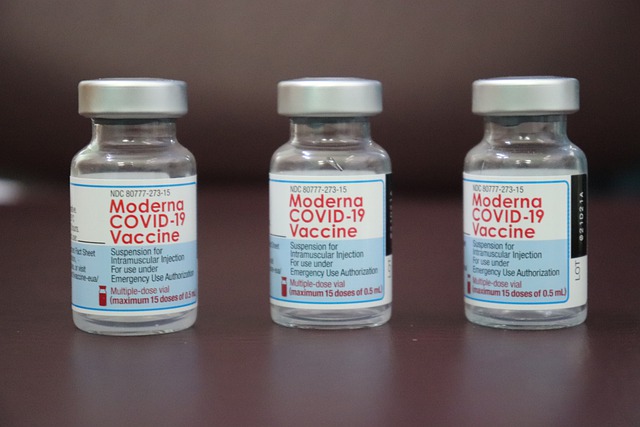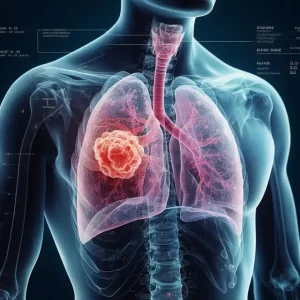Why will 30 million doses of Modern COVID-19 vaccine be thrown into trash?
- EPA Announces First-Ever Regulation for “Forever Chemicals” in Drinking Water
- Kochi University pioneers outpatient bladder cancer treatment using semiconductor lasers
- ASPEN 2024: Nutritional Therapy Strategies for Cancer and Critically Ill Patients
- Which lung cancer patients can benefit from neoadjuvant immunotherapy?
- Heme Iron Absorption: Why Meat Matters for Women’s Iron Needs
- “Miracle Weight-loss Drug” Semaglutide Is Not Always Effective
Why will 30 million doses of Modern COVID-19 vaccine be thrown into trash?
- Red Yeast Rice Scare Grips Japan: Over 114 Hospitalized and 5 Deaths
- Long COVID Brain Fog: Blood-Brain Barrier Damage and Persistent Inflammation
- FDA has mandated a top-level black box warning for all marketed CAR-T therapies
- Can people with high blood pressure eat peanuts?
- What is the difference between dopamine and dobutamine?
- How long can the patient live after heart stent surgery?
Why will 30 million doses of Modern COVID-19 vaccine be thrown into trash? Global COVID pandemic has been over?
“We contact other governments through the embassy in Washington, but no one wants it.” Stefanie Bancel, CEO of Moderna, the US COVID-19 vaccine maker said at the Economic Forum.
Bancel said that attempts to contact governments have been unsuccessful, “sadly to say that I am throwing 30 million doses of vaccines in the trash.”

To make matters worse. In early June, Moderna and the European Commission jointly revised the cooperation agreement to allow EU member states to obtain a COVID-19 vaccine in late 2022 or early 2023. The vaccines were originally scheduled to be delivered in the second quarter of 2022.
Not only Moderna, but another COVID-19 vaccine giant, Pfizer and BioNTech , reached an agreement with the EU in mid-May to adjust the delivery schedule according to the conditions of the member states .
According to the media, vaccines originally scheduled to be shipped in June and throughout the summer were instead shipped in September and the fall and winter. The move could signal an imminent decline in demand across the European market.
Just over a year ago, on January 25, 2021, the European Union decided to establish a “transparency mechanism” for the export of COVID-19 vaccines because AstraZeneca, a major producer of COVID-19 vaccines, did not keep its promises and delivered COVID-19 vaccines in reduced quantities.
According to this mechanism, pharmaceutical companies producing COVID-19 vaccines in the EU must notify the EU in advance and perform additional registration when exporting vaccines to countries and regions outside the EU.
It seems like a joke now. Many governments are discussing a very different issue today: how to avoid invalidating the COVID-19 vaccine due to expiration. Similarly, the COVID-19 vaccine company, whose value has skyrocketed in the past two years, must also consider finding a new way out.
Who is the major producer of the COVID-19 vaccine?
As of June 5, 2022, about 5.2 billion people in the world have received a dose of the COVID-19 vaccine, and about 4.7 billion people have been vaccinated in the whole process.
That is, more than half of the world’s 7.75 billion people have been vaccinated against the COVID-19.
In terms of production volume, data from the International Pharmaceutical Manufacturing Alliance (IFPMA) show that since the outbreak of the epidemic, the vaccine production has exceeded 13 billion doses, and the vaccine dose has reached 11 billion doses.
However, due to the relatively short shelf life of COVID-19 vaccines, as of the end of March, the European Union and the G7(G7)The excess vaccine amounts to 497 million doses.
The oversupply problem is especially evident in India. India has the world’s largest vaccine industry, and over the past year, Indian vaccine companies have continued to expand their production capacity.
A year ago, there were media reports that in April 2021, the Indian Ministry of Finance also specifically approved an allocation of $610 million to expand the vaccine production scale of the world’s largest vaccine manufacturer Serum Institute and BharatBiotech.
By April 2022, Adar Poonawalla, CEO of Serum Institute of India, publicly stated: “We have 200 million doses of vaccine in stock, so we had to suspend production in December last year.” Serum Institute of India produces more than 60 million COVID-19 vaccines per month . , is the major producer of Oxford/AstraZeneca vaccines in India.
Capacity has grown and orders from the government have not increased significantly. This is the dilemma faced by all COVID-19 vaccine manufacturers.
To this end, both AstraZeneca and Pfizer have lowered their 2022 sales. Pfizer’s vaccine sales were $36.8 billion last year, and the company expects sales to fall to $32 billion in 2022; AstraZeneca’s COVID-19 vaccine Vaxzevria had sales of about $4 billion last year.
Health data analytics firm Airfinity expects to produce an additional 9 billion doses in 2022, with Pfizer alone planning to make 4 billion. But after that, vaccine demand could drop to about 2.2 billion to 4.4 billion doses a year.
Most of the COVID-19 vaccines currently used around the world are produced in China and Europe. China’s SINOPHARM and SINOVAC’s COVID-19 vaccines – which account for almost half of global vaccine deliveries.
Data from a joint statistical analysis by Airfinit and the International Federation of Pharmaceutical Manufacturers and Associations (IFPMA) show that 11.15 billion doses of the COVID-19 vaccine have been produced worldwide in 2021.
Of these, about 4.5 billion doses were produced in China and nearly 2.3 billion doses were produced in Europe. It was followed by India and the United States, which produced about 1.6 billion and 950 million doses, respectively.
China’s COVID-19 vaccination is coordinated and planned. A person from the grass-roots disease control system told Caijing·Great Health that county-level units generally report to the city based on monthly needs, and book COVID-19 vaccines as needed, and report once a month.
As for the demand, it is currently estimated based on the number of unvaccinated local people and the number of second and third doses of vaccine that need to be vaccinated.
During the “two sessions” in 2021, Yu Qingming, chairman of SINOPHARM Group, a COVID-19 vaccine manufacturer, said that SINOPHARM Group’s vaccine production is expected to exceed 1 billion doses in the second half of 2021, and it will reach 3 billion doses in 2022.
According to this data, only the vaccine production of SINOPHARM Group can meet the national vaccination demand in 2022.
Whether there will be an oversupply of the COVID-19 vaccine in China, a COVID-19 vaccine manufacturer did not respond positively to the interview of “Finance and Health”, but pointed out that as of June 7, 2022, the proportion of the world’s population vaccinated against the COVID-19 vaccine every day is declining. This trend has begun at the end of 2021 and continues to this day.
The Chinese research report shows that the production capacity of the COVID-19 vaccine in 2022 will be the highest in China Biotechnology, with a scale of 7 billion to 8 billion doses, SINOVAC will be higher than 2 billion doses, CanSino will be at a scale of 500 million to 700 million doses. Zhifei Bio has 300 million to 600 million doses, and Kangtai Bio has about 200 million doses of inactivated vaccines.
“The big question going forward will be what to do with the capacity for all these vaccines as demand decreases,” Scott Rosenstein, a special health care consultant at Eurasia Group in New York, told the media.
Doubts about vaccine efficiency still there: Do people still need to receive the fourth dose of COVID-19 vaccine?
The frequency and number of booster vaccinations depends in part on how quickly the virus evolves. So far, many studies and data have shown that the new coronavirus has undergone countless mutations, and its immune evasion ability is sufficient to weaken the protection provided by the first round of existing vaccines.
USA:
CDC research shows that booster immunity levels decline over time: The protection of the third dose against Omicron variant cases dropped to four from 91% in the first two months 78% a month later.
Israel:
A fourth dose of the vaccine was “minimal” to protect against the new coronavirus, according to a study by Israel’s Sheba Medical Center.
The study showed that the immune globulin antibody levels and neutralizing antibody levels in the subjects who received the fourth dose were basically similar to one month after the third dose. Researchers at the center said that the fourth dose of the vaccine could help immunosuppressed people and the elderly, while the effect was not obvious for healthy young people.
India:
Some experts in India have also openly questioned the need for booster shots, doubting their effectiveness in continuing to prevent infection.
WHO:
The World Health Organization (WHO) said in January 2022 that repeated vaccinations with vaccines developed with the original virus may be “neither appropriate nor sustainable”.
Indeed, the medical community is divided. Another Israeli study showed that participants had an 8-fold and 10-fold increase in antibodies against the Omicron variant one week and two weeks after completing the fourth dose, respectively, and that there was no new security risks.
About 740,000 people in Israel have completed their fourth vaccination. The vaccination rule in many high-income countries is to give the whole population a third booster dose, but only to provide a fourth or additional dose to vulnerable and high-risk groups.
Hong Kong:
According to information released by the Hong Kong Department of Health on May 5, the case fatality rate among unvaccinated elderly people aged 70-79 in Hong Kong is 5.55%, and the case fatality rate for two-dose vaccination is 0.59%.
The vaccine’s case fatality rate is 0.16%. That is to say, the mortality rate of the unvaccinated 70- to 79-year-olds is 9 times and 34 times higher than that of the vaccinated two-dose and three-dose groups, respectively.
China:
On April 27, Zhang Yuntao, chief scientist of SINOPHARM China Biotechnology, said at a media communication meeting that the company developed the Omicron variant COVID-19 inactivated vaccine, which is accelerating relevant clinical research after obtaining clinical approvals in the Mainland and Hong Kong recently.
It will be carried out in accordance with the relevant guidelines for vaccine development and evaluation. The relevant clinical program needs to be determined after further discussions with experts and drug regulatory authorities. The clinical study is expected to take about three to four months to complete.
At the same time, the China State Food and Drug Administration also officially approved SINOVAC’s Omicron variant new coronavirus inactivated vaccine to enter clinical research.
Wang Huaqing, chief expert of the immunization program of the Chinese Center for Disease Control and Prevention, said at a press conference on May 13, 2022 that the results of monitoring and evaluation in areas where Omicron is currently endemic in China, especially in areas with extensive and severe epidemics, can be seen. , the difference in protection between unvaccinated and two doses and three doses of vaccination is very obvious, and there is also a significant difference in the prevention of severe disease and death between two doses of vaccination and three doses of vaccination.
Wang Huaqing cites the results of a study in Jilin City, saying that among people over 60 years old, the incidence of severe disease in those who have not been vaccinated and who received only one dose of inactivated vaccine is 20% in those who have been vaccinated twice and vaccinated three times. times more.
Through these data, it can be seen that the whole course of vaccination, the protection effect of strengthening vaccination against severe disease and death prevention will be better.
Gavi, the Vaccine Alliance
Dr. Seth Berkeley, CEO of Gavi, told the media that more data is needed to draw conclusions about the vaccine’s effectiveness against Omicron – and that stepping up vaccination should remain a top priority in the response to the outbreak Heavy.
What about excess capacity?
COVID-19 vaccine suppliers must find other ways out.
Currently there are not many paths to take. Since the demand for other types of vaccines is certain and is not enough to cover the multiple production lines built for the COVID-19 vaccine, switching to other mature vaccines is not a viable option for all factories.
Based on its own mRNA (messenger ribonucleic acid) technology platform, the German company Baintech has invested in the research and development of mRNA cancer vaccines, and the vaccines are currently in phase II clinical trials. “If the cancer mRNA vaccine goes smoothly, it will take 3 to 7 years to go to market.”
Earlier, Kiran Mazumdar Shaw, chairman of India’s Biocon Biologics , said: “We believe that not only the COVID-19 vaccine, but also the flu vaccine, pneumococcal vaccine and other neglected disease vaccines will be It’s starting to become a very important opportunity.” In early May 2022, it spent $3.335 billion to acquire the business of a biosimilar company.
Indonesia’s largest drugmaker Kalbe Farma halted work on a coronavirus vaccine with South Korean biotech firm Genexine Inc. in order to stop losses, noting that vaccine stocks are sufficient. It now aims to use its DNA technology for other types of vaccines.
In order to prevent the vaccines that have been produced from being wasted, many companies and governments consider donations or transfers.
The German government ran into the question of how to store a surplus of vaccines as early as mid-2021. At the time, the German Federal Ministry of Health even discussed developing a logistical procedure for collecting vaccines stored at distribution centers in the states and clarifying how to deal with the vaccines that have been delivered.
In addition, the German federal and state governments also plan to increase vaccine transfers to other countries and regions.
A resolution states that the number of vaccines that have to be discarded due to expiration must be kept to a minimum. “The federal government will donate to third countries the vaccines that are not used in the national vaccination campaign and whose stock status permits.” Moreover, before the resolution was issued, it announced that the stockpile would be removed and at least 30 million doses would be donated to third countries. vaccine.
As for how to adjust production capacity, Chinese manufacturers SINOPHARM Group China Biotechnology, SINOVAC Holdings, and CanSino have not responded positively to media.
Why will 30 million doses of Modern COVID-19 vaccine be thrown into trash? Global COVID pandemic has been over?
(source:internet, reference only)
Disclaimer of medicaltrend.org
Important Note: The information provided is for informational purposes only and should not be considered as medical advice.



